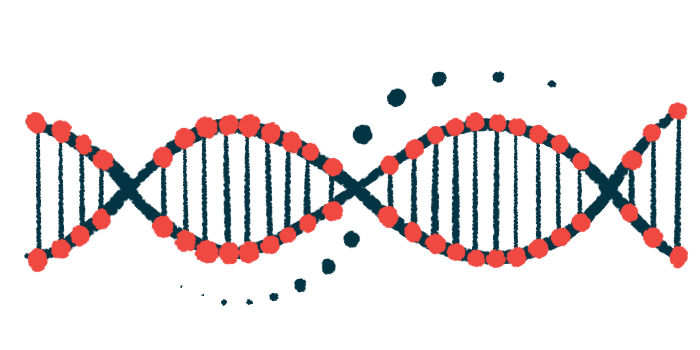Reanalysis of old genetic data can aid diagnosis of rare diseases: Study
Novel program aims to help patients receiving negative/inconclusive results
Written by |

Ambry Genetics‘ Patient for Life program — designed to systematically reanalyze genetic data as new information becomes available — can help in the diagnosis of rare genetic diseases, a new study by company researchers reports.
Indeed, using the program led to a diagnosis in more than 450 samples, from a pool totaling more than 10,000, that had been classified as negative or uncertain, the researchers found.
Overall, according to the team, “this study demonstrates the benefits of a laboratory-driven proactive approach to reanalysis.” The researchers added that “laboratory-driven proactive reanalysis effectively provides more diagnostic reclassifications compared to clinician-initiated reanalysis.”
The study, “Impact of Laboratory-Driven Proactive Reanalysis: Reclassification to Positive in 5% of Initially Negative or Uncertain Exome Sequencing Cases,” was published in Genetics in Medicine. The work was conducted by a team of nine Ambry scientists.
New research can shed light on earlier findings from genetic data
People with rare disorders like AADC deficiency often need to undergo long medical odysseys before they are able to get a correct diagnosis. There are thousands of known rare diseases, many of which are caused by genetic mutations.
Over the last few decades, advances in genetic technology have made it easier to diagnose rare genetic diseases. One common technology used is exome sequencing, which involves determining the sequence of all genes that provide instructions to make proteins.
Many such genes are implicated in disease; for example, AADC deficiency is caused by mutations in the DDC gene, which provides instructions to make the AADC protein.
Even when exome sequencing is successfully carried out, however, it doesn’t always give answers immediately. Part of the problem is that there is naturally a lot of variation in genetic sequences from person to person. So, even if a person is found to have an altered gene, it may be unclear whether the alteration is a disease-causing mutation or a harmless variation. Plus, for some rare diseases, the specific gene or genes involved in the disease are still unknown.
Researchers are constantly working to unravel the meanings of specific mutations and pinpoint previously unknown genes that underlie specific disorders. This means it’s not uncommon that someone will undergo exome sequencing with negative or inconclusive results, only for subsequent research to shed new light on the findings. But for the new findings to be relevant in such cases, the old exome sequencing data has to be reanalyzed with the new findings in mind. Often, this only happens if the patient’s doctor specifically requests a reanalysis.
Systematic reanalysis approach yields more positive results
Ambry’s Patient for Life program aims to systematically reanalyze old exome sequencing data whenever new relevant research is reported. In this way, the program is designed to allow people who’ve had negative or inconclusive test results in the past to benefit from new research that might help them find answers.
“Unlike some laboratories who provide limited or only clinician-driven reanalysis services, we believe we have a responsibility to patients to proactively update clinical reports as new clinically relevant scientific discoveries are made, which may benefit the patients who need answers,” Tom Schoenherr, CEO of Ambry, said in a company press release.
This study reported on outcomes from an exome sequencing database containing more than 10,000 samples. Over the course of the study, about a quarter of the samples were reanalyzed due to the availability of new data. This led to a diagnosis in 453 samples (5%) that had previously been classified as negative or uncertain.
The systematic reanalysis approach yielded many more new positive results than reanalyses that were only done at the request of clinicians, the researchers noted.
Without this program, we might still be searching for answers. … This program didn’t just provide a diagnosis. It gave us connection and hope.
Specifically, while most reanalyses (74%) were started by clinicians, a change in diagnosis occurred in 12%. In comparison, lab-driven reanalyses (24%) and family studies (2%) had much higher success rates, with 100% and 81% leading to reclassification, respectively. Lab-driven reclassifications made up the biggest share of both clinically significant diagnostic upgrades and downgrades, accounting for 80% of all significant changes, per the researchers.
“Laboratory-driven proactive reclassifications … yielded significantly higher rates of diagnostic reclassifications compared to clinician-initiated reanalysis, highlighting the impact and efficiency of this approach,” the scientists wrote.
These positive results not only emphasize the utility of Ambry’s program, but suggest this type of reanalysis strategy should be standard for any company that’s offering genetic testing, according to the researchers.
“To carry out reclassification workflows efficiently, laboratories should allot resources for the continued monitoring of [new data on genetic diseases] and issue clinically meaningful reclassification reports proactively without waiting for clinicians to request reanalysis,” they concluded.
This type of program can be extremely impactful for people like Jordan Hinrichs. Following a reanalysis as part of Ambry’s program, Hinrich’s son was diagnosed with a rare disorder caused by mutations in the ZMYM2 gene.
“Without this program, we might still be searching for answers. Discovering the cause of my son’s condition brought immense relief — and opened the door to a community of families on the same journey,” Hinrichs said. “This program didn’t just provide a diagnosis. It gave us connection and hope.”







